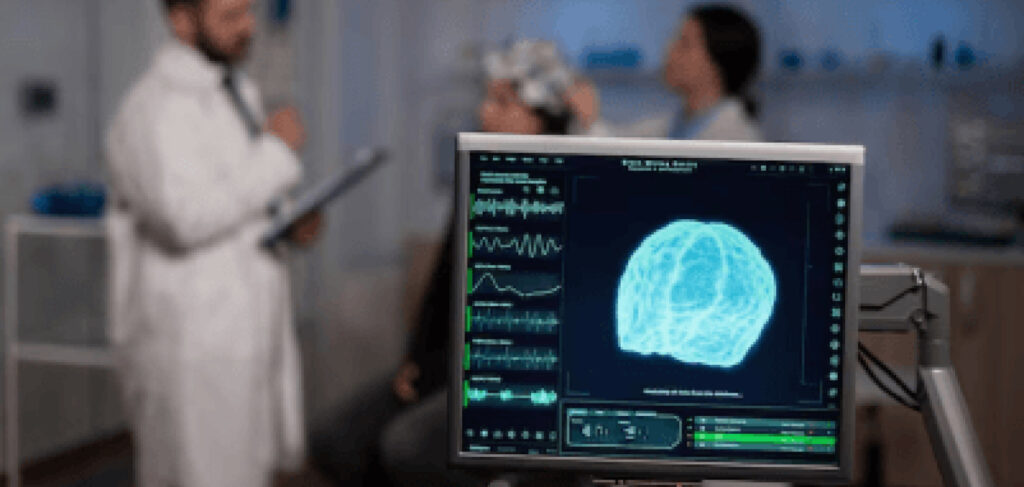
In medical science, few areas have seen as much technological advancement as brain tumor surgery. The complexity of the brain and the critical functions it controls make brain tumor treatment a particularly challenging field. However, recent technological innovations have revolutionized tumor surgery, improving outcomes and providing hope for patients with conditions like glioma and brain cancer. This blog explores the significant role technology plays in advancing brain tumor surgery and enhancing various tumor treatment options.
Technological Innovations in Brain Tumor Surgery
The integration of advanced technology in brain tumor surgery has transformed the approach to treating brain tumors. Key innovations include:
Imaging Technologies: Enhancing Precision and Accuracy
One of the most critical advancements in brain tumor treatment is the use of sophisticated imaging technologies. Techniques such as Magnetic Resonance Imaging (MRI) and Computed Tomography (CT) scans provide detailed, high-resolution images of the brain, allowing for precise tumor localization.
- Functional MRI (fMRI) maps brain activity by measuring changes in blood flow, helping surgeons identify critical areas that control speech, movement, and other essential functions. This is particularly valuable in glioma treatment, where tumors often infiltrate functional brain regions.
- Positron Emission Tomography (PET) scans help differentiate between tumor tissue and normal brain tissue, enhancing the accuracy of brain tumor surgery.
Intraoperative Imaging: Real-Time Surgical Guidance
Intraoperative imaging technologies, such as intraoperative MRI and ultrasound, provide real-time visualization during surgery. These tools enable surgeons to adjust their approach dynamically, ensuring maximum tumor removal while preserving healthy brain tissue.
- Intraoperative MRI: This allows surgeons to perform MRI scans during the surgery, providing immediate feedback and reducing the risk of leaving residual tumor tissue.
- Intraoperative Ultrasound is used to visualize the tumor and surrounding brain structures, aiding in precise tumor resection.

Stereotactic Surgery: Minimally Invasive Techniques
Stereotactic surgery uses 3D coordinates to locate and treat brain tumors with minimal invasion. This approach is particularly beneficial for deep-seated or difficult-to-reach tumors.
- Stereotactic Radiosurgery (SRS): A non-invasive technique that delivers precisely targeted radiation to the tumor, minimizing damage to surrounding healthy tissue. It is effective for certain brain cancer treatments and recurrent tumors.
- Stereotactic Biopsy: Allows for precise sampling of tumor tissue for diagnosis and treatment planning, especially in cases where traditional surgery is too risky.
Robotics and Computer-Assisted Surgery: Enhancing Surgical Precision
Robotic systems and computer-assisted technologies have revolutionized tumor surgery by enhancing precision, reducing human error, and improving surgical outcomes.
- Robotic Surgical Systems: These systems provide surgeons with enhanced dexterity and control, allowing for more precise removal of tumors.
- Neuro-navigation Systems: Computer-assisted navigation systems use preoperative imaging data to guide surgeons during brain tumor surgery, ensuring accurate targeting and minimizing damage to critical brain areas.
Laser Ablation: A Novel Treatment Modality
Laser interstitial thermal therapy (LITT) uses laser energy to destroy tumor tissue. This minimally invasive technique is particularly useful for treating tumors that are difficult to access with traditional surgical methods. LITT involves inserting a laser fiber into the tumor and applying heat to ablate the tumor cells. It is a promising option for glioma treatment and other brain tumors.
The Impact of Technology on Patient Outcomes
The integration of these advanced technologies in brain tumor treatment has significantly improved patient outcomes in several ways:
Increased Precision and Safety
Technological advancements have enhanced the precision of brain tumor surgery, reducing the risk of complications and improving the safety of the procedures. Real-time imaging and computer-assisted navigation ensure that surgeons can remove tumors more accurately, preserving vital brain functions.
Improved Tumor Resection Rates
Intraoperative imaging and advanced surgical tools have increased the extent of tumor resection, which is crucial for improving prognosis and reducing the likelihood of recurrence. This is particularly important in aggressive brain cancers, where complete tumor removal can significantly impact survival rates.
Reduced Recovery Times
Minimally invasive techniques, such as stereotactic surgery and laser ablation, have reduced recovery times and hospital stays. Patients experience less post-operative pain and quicker return to normal activities, enhancing their overall quality of life.
Personalized Treatment Plans
Advanced imaging and diagnostic tools enable personalized treatment plans tailored to the specific characteristics of each tumor. This approach ensures that patients receive the most effective and targeted brain tumor treatment, maximizing the chances of a successful outcome.
Conclusion
The role of technology in advancing brain tumor surgery cannot be overstated. From sophisticated imaging techniques to robotic systems and minimally invasive procedures, these innovations have revolutionized the field of brain tumor treatment. As technology continues to evolve, it promises even greater improvements in the precision, safety, and effectiveness of tumor surgery.
For patients facing glioma treatment, brain cancer treatment, or any other form of brain tumor treatment, these technological advancements offer hope and a path towards better outcomes. By embracing these cutting-edge tools, the medical community is continually enhancing its ability to fight brain tumors and improve the lives of those affected by these challenging conditions.





